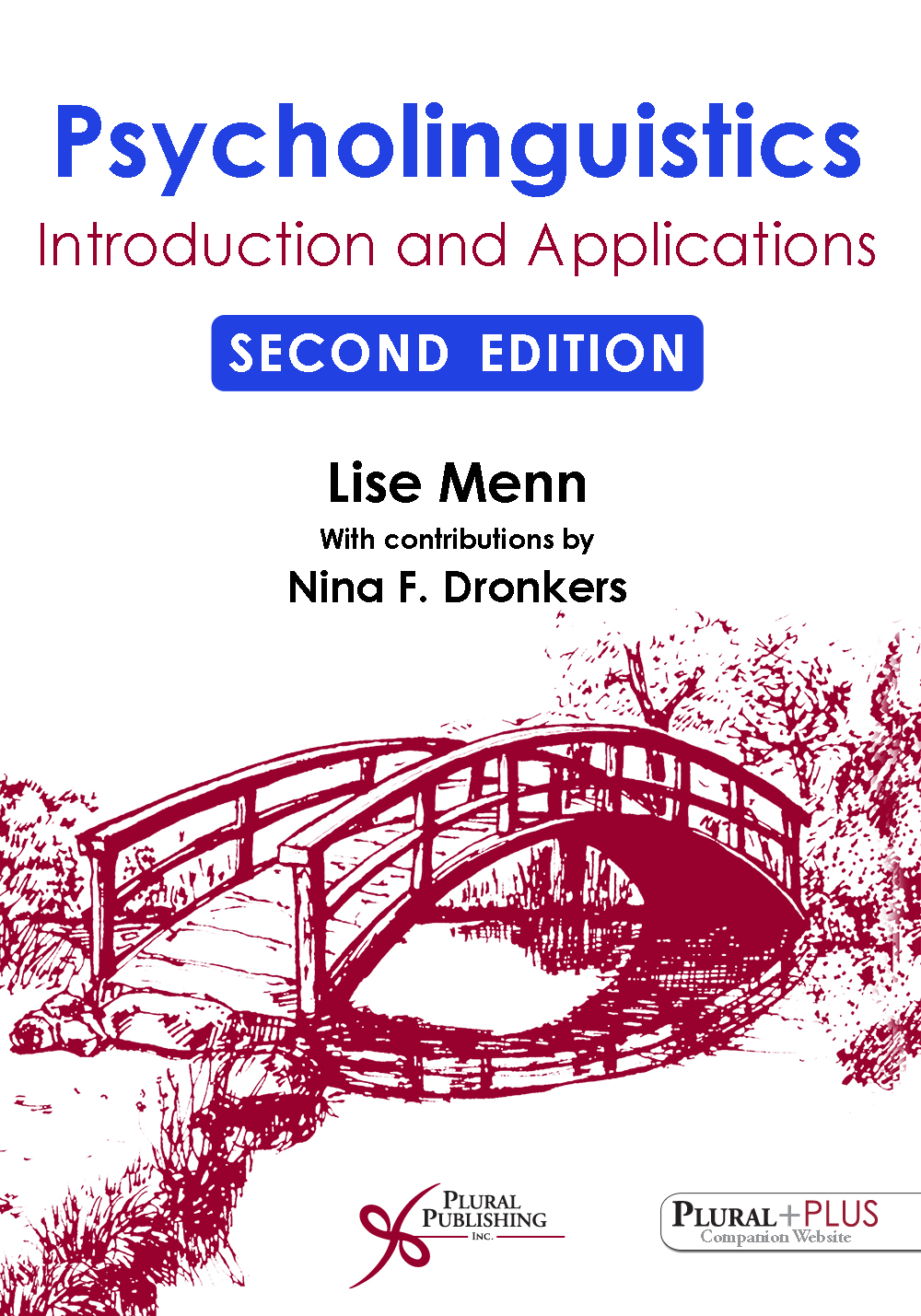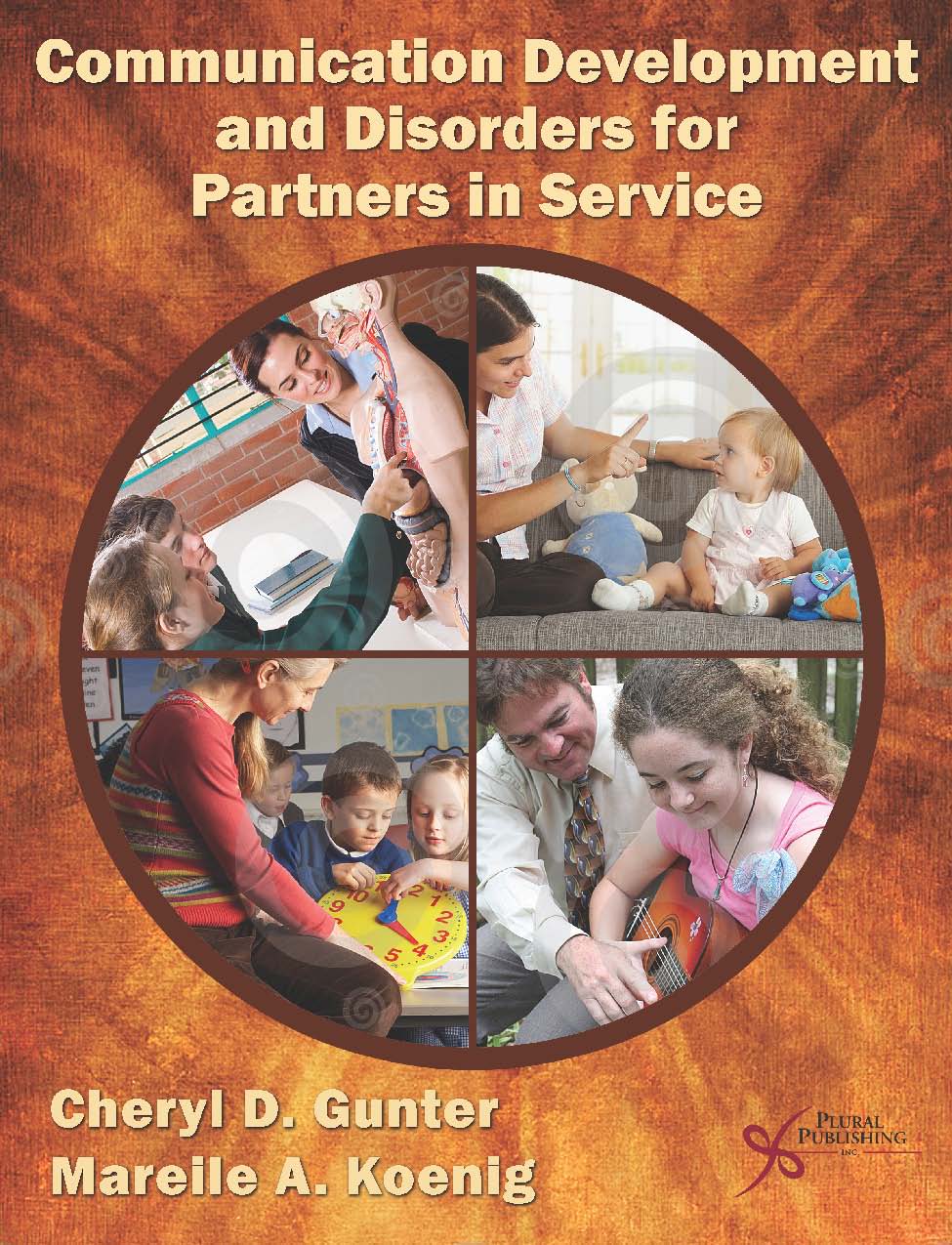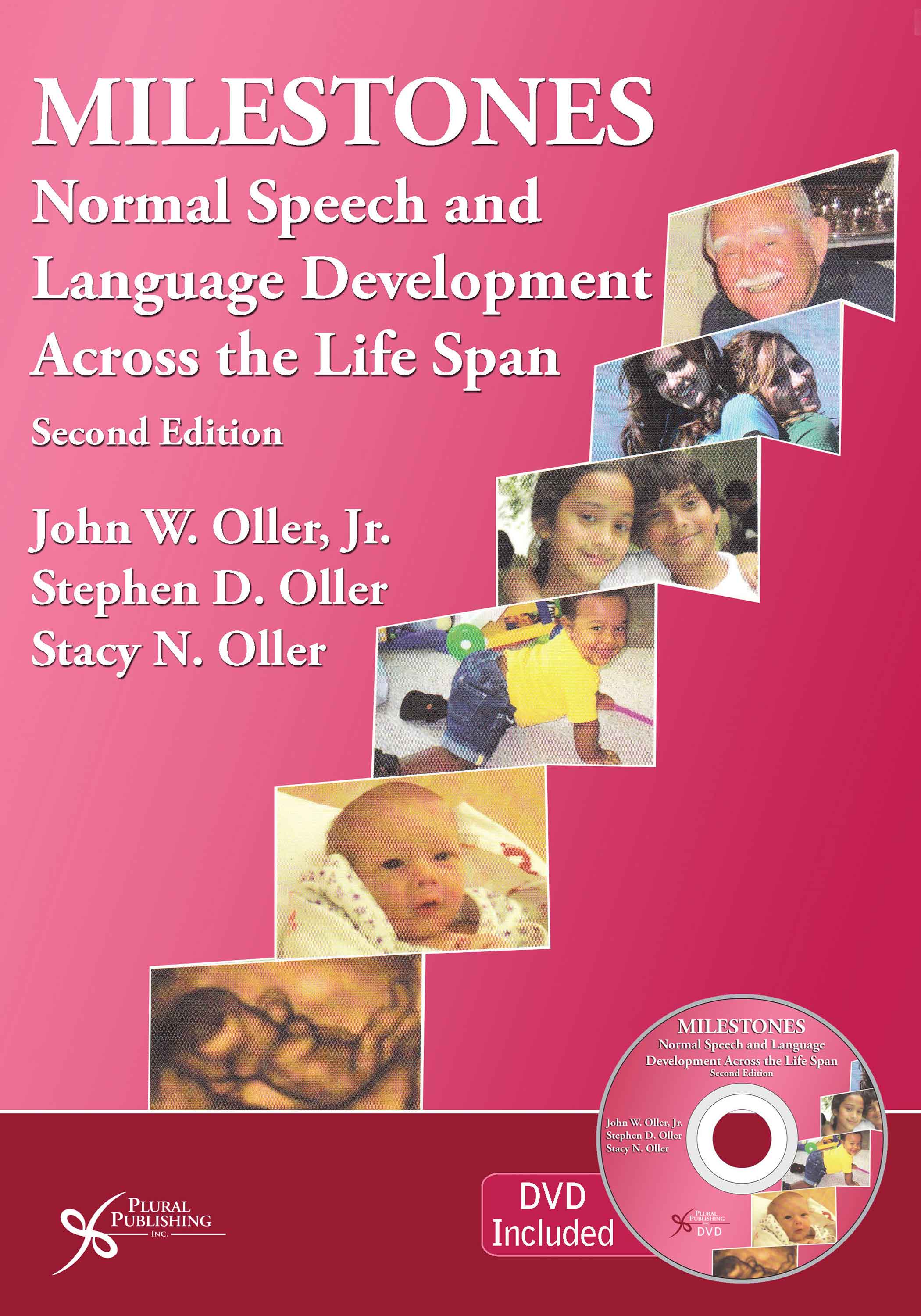
Psycholinguistics: Introduction and Applications
Second Edition
Lise Menn, Nina F. Dronkers
Details: 552 pages, B&W, Softcover, 7" x 10"
ISBN13: 978-1-59756-712-1
© 2017 | Available
For Instructors
Purchase
Psycholinguistics: Introduction and Applications, Second Edition is the first textbook in psycholinguistics created for working language professionals and students in speech-language pathology and language education, as well as for students in psychology and linguistics. It provides a clear, lively introduction to research and ideas about how human brains process language in speaking, understanding, and reading. Within a unifying framework of the constant interplay of bottom-up (sensory) and top-down (knowledge-based) processing across all language uses and modalities, it is an integrated, self-contained, fully updated account of psycholinguistics and its clinical and pedagogical applications. In this second edition, author Lise Menn is joined by leading brain researcher and aphasiologist, Nina Dronkers. The significantly revised brain chapter contains current findings on brain structure and function, including the roles of newly delineated fiber tracts and language areas outside Broca's and Wernicke's areas. Fully-explained examples are taken from Spanish and other languages as well as English.
Five core chapters (language description; brain structure and function; pragmatic and semantic stages of speech production; syntactic, morphological, phonological, and phonetic stages of speech production; and experimental psycholinguistics) form the foundation for chapters, presenting classic and recent research on aphasia, first language development, reading, and second language learning. A final chapter demonstrates how linguistics and psycholinguistics can and should inform classroom and clinical practice in test design and error analysis, while also explaining the care that must be taken in translating theoretically based ideas into such real-world applications. Concepts from linguistics, neurology, and experimental psychology are kept vivid by illustrations of their uses in the real world, the clinic, and language teaching. Technical terms are clearly explained in context and also in a large reference glossary.
Additionally, the text is now accompanied by a PluralPlus companion website that includes a Web-based Student Workbook as well as an Instructor's Manual--both flexibly organized for instructors and students of varying backgrounds.
Instructors, why adopt this text?
- Clear, vivid, straightforward writing style by experienced professors with varying student needs and instructor backgrounds (speech pathology, linguistics, psychology) in mind.
- Practical and open-minded: treats language innateness and the value of formal versus functional approaches to language description as unsettled questions.
- Builds awareness of specific issues for clinic clients and English learners from Chinese, Japanese, and Spanish backgrounds.
- Explicit, attractive presentation of clinical and pedagogical applications of psycholinguistics and linguistics.
- Teaches basics of laboratory, clinical, and second-language classroom experimental design while presenting key experiments underlying current thinking about brain and behavior.
- Review of a range of phenomena from normal, partially-learned, and impaired language, such as dialect variation, semantic category priming and garden-path sentences; alteration of the brain by prenatal and early language experience; overgeneralization and failure to generalize; reading problems, aphasia, oral apraxia, perseveration.
- Complete glossary of technical terms that are also clearly explained throughout the text.
- NEW! 'Companion website', which replaces the previous CD, that provides sound files to help with learning the International Phonetic Alphabet and anatomical terms, color versions of text figures, supplemental information, and a compact version of the experimental psycholinguistics section for students with a background in psychology.
- NEW! A Student Workbook with problems, self-quizzes, links to additional resources, and optional advanced material.
- NEW! A Instructor's Manual that provides source information and additional illustrations and explanations of key concepts for each chapter, suggesting classroom discussion topics and instructional activities, and providing explanations and answers for Student Workbook problems.
From the Foreword
"This remarkable book lays out the field of psycholinguistics like a feast on the table of knowledge. As it moves deftly between theory and experiment, this text reviews contemporary understanding of basic questions on the use of language, such as: How do we acquire a first or later language? How do we understand and produce sentences? How do our brains process language? What causes errors in language production and what do these errors tell us about the neural organization of language? How do neurologic disorders such as stroke lead to impairment of language?
Deep knowledge of the subject matter is beautifully matched with eloquent but straightforward expression to produce a book that is inviting and rewarding to read. Above all, Lise Menn and Nina Dronkers carry the reader along a journey that explores the excitement of research in psycholinguistics, marking the way with signposts of scientific accomplishment and pointing out pathways of potential discovery. Readers who may have been frustrated in previous attempts to fashion an under- standing of psycholinguistics from other books or a collection of journal articles are well advised to read this book for a clear and comprehensive account of the field. Readers who know little about either psychology or linguistics should not be intimidated, as this book will escort them through the forest of theories, hypotheses, and discoveries, culminating in a satisfying assessment of what is known and how it came to be known. Instructors who seek a book that will both encourage and educate their students will find this one to be a most worthy candidate. Readers of diverse backgrounds and levels of expertise will enjoy this book as a trustworthy and entertaining companion. This second edition retains the considerable strengths of the first but offers several enhancements to make the book even better.
Psycholinguistics: Introduction and Applications, Second Edition is authoritative in its command of information and enjoyable in its exquisite use of words to talk about words. What better way to learn about psycholinguistics?"
—Raymond D. Kent, PhD, Professor Emeritus, University of Wisconsin-Madison
Reviews
"The approach used by Menn in this manual is to clearly present in layman’s terms (or more scientific when necessary to avoid ambiguity, e.g., she uses the term ‘lemma’ not ‘word’) basic issues pertaining to psycholinguistic processes, grounding her work in experimentally sound data. The data is not necessarily referred to directly, except for examples in the chapters where discussion of experimental data is presented, and the text is kept light, but a large amount of supplementary materials (including links to articles online, scientific videos available on YouTube or other sites, and so on) are available and clearly mentioned in the textbook or on the companion website. Many concrete examples are presented in the manual and on the companion website, and exercises are also included: these help ground the concepts presented in real language use, based on typical and language-disordered populations. ...The book covers lots of ground and could be used for a global course in psycholinguistics, or by picking and choosing some chapters for a course focusing more specifically on some topics addressed in the manual. Alternatively, it could be used as a refresher, for the specialized teacher, speech-language pathologist (SLP), and so on. The writing style and glossary make the book accessible to a general public interested in psycholinguistics. From a teacher’s point of view, this book is very versatile, as many topics can be covered, or alternatively, a few can be developed in depth. The teacher’s manual online offers ideas on how to develop class discussions on specific topics and what some answers to wider ranging questions might be, thus priming or engaging the teacher in developing a thoughtful learning experience."
—Phaedra Royle, PhD, Université de Montréal, LINGUIST List (July 2017)
"The plain language and introductory level of this book make it a solid resource for students who do not have much background in linguistics, psycholinguistics, or communication sciences and disorders. Students who are already acquainted with one or more areas could use this book as a selective reading resource. Research experiments discussed in the book could be intriguing to students who plan to go on to graduate study in psycholinguistics or related areas. Examples of speech and language errors help readers build real-life connections with psycholinguistics."
—Dongyin Mei, MA, University of South Alabama, in Doody's (October 2016)
Foreword by Raymond D. Kent, PhD
Introduction: Psycholinguistics and What It's Good For
Acknowledgments
Chapter 1. Basic Linguistics: How to Describe Language Use and Language Knowledge
Chapter 2. Brains and Language
Nina F. Dronkers and Lise Menn
Chapter 3. Normal Speech Errors and How They Happen: I. From Idea to Word
Chapter 4. Normal Speech Errors and How They Happen: II. Saying Words and Sounds in the Right Order
Chapter 5. Experimental Studies of Normal Language Production and Comprehension: An Introduction to Experimental Methods in Psycholinguistics and Neurolinguistics
Chapter 6. Analyzing Aphasic Speech and Communication: The Psycholinguistics of Adult Acquired Language Disorders
Chapter 7. Developmental Psycholinguistics: Studies of First Language Acquisition
Chapter 8. The Psycholinguistics of Reading and Learning to Read
Chapter 9. First and Second Language Acquisition: A Psycholinguistic Approach to Their Similarities and Differences
Chapter 10. Using Psycholinguistics in Testing, Teaching, and Therapy
Afterword: Other Important Areas for Applying Psycholinguistics
Glossary
Index
Purchasers of this book receive complimentary access to supplementary materials hosted on a PluralPlus companion website.
Student Materials:
- Student workbooks
- Audio content
- Video content
- Study questions
- Companion figures
Instructor Materials:
- Instructors manual
- Audio content
- Video content
- PowerPoint slides
To access the materials, log in to the website using the URL located inside the front cover of your copy of Psycholinguistics: Introduction and Applications, Second Edition.
STUDENTS:
To access the student materials, you must register on the companion website and log in using the access code located inside the front cover of your textbook.
INSTRUCTORS:
To access the instructor materials, you must contact Plural Publishing, Inc. to be verified as an instructor and receive your access code.
Email: instructormaterials@pluralpublishing.com
Tel: 866-758-7251 (toll free) or 858-492-1555

Communication Development and Disorders for Partners in Service
First Edition
Cheryl D. Gunter, Mareile A. Koenig
Details: 304 pages, B&W, Softcover, 8.5" x 11"
ISBN13: 978-1-59756-025-2
© 2011 | Available

Milestones: Normal Speech and Language Development Across the Life Span
Second Edition
John W. Oller, Jr., Stephen D. Oller, Stacy Oller
Details: 624 pages, B&W, Softcover, 7" x 10"
ISBN13: 978-1-59756-501-1
© 2013 | Available


